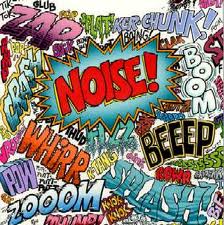


Marcel Decker, Inc., (1994).Environmentalism has been around for as long as civilization itself, but in the United States, the 1960s and early 1970s could be called the Golden Age of the environmental movement. Industrial Noise Control, Fundamentals and Applications.EARLAB, National Aeronautics and Space Administration (NASA) Auditory Demonstration Laboratory. Occupational Noise-Induced Hearing Loss in Australia - Overcoming barriers to effective noise control and hearing loss prevention.Extensive index of noise control case studies from HSE. Health and Safety Executive (HSE), United Kingdom.

Contains essential information about noise control technology, as well as a collection of 61 case histories describing successful noise control projects. Department of Health and Human Services (DHHS), National Institute for Occupational Safety and Health (NIOSH) Publication No. Presents summaries, by industry, of different health hazard evaluations performed for exposures to noise. Health Hazard Evaluations: Noise and Hearing Loss, 1986-1997.OSHA Technical Manual (OTM) Chapter - Noise.The following references provide information on measuring noise exposure and recognizing and controlling workplace noise hazards. Specifically, for every doubling of the distance between the source of noise and the worker, the noise is decreased by 6 dBA. Control noise exposure through distance is often an effective, yet simple and inexpensive administrative control.Provide quiet areas where workers can gain relief from hazardous noise sources and.Limit the amount of time a person spends at a noise source.Operate noisy machines during shifts when fewer people are exposed.Place a barrier between the noise source and employee (e.g., sound walls or curtains)Īdministrative controls are changes in the workplace or schedule that reduce or eliminate the worker exposure to noise.Maintain and lubricate machinery and equipment (e.g., oil bearings).Examples of inexpensive, effective engineering controls: There are several ways to control and reduce worker exposure to noise in a workplace where exposure has been shown to be excessive.Įngineering controls involve modifying or replacing equipment, or making related physical changes at the noise source or along the transmission path to reduce the noise level at the worker's ear. Exposure to Noise is measured in units of sound pressure levels called decibels, using an A-weighted sound levels (dBA).


 0 kommentar(er)
0 kommentar(er)
